Best Windows laptops of March 2025: Our reviews, tests, and rankings
Plenty of laptops claim to be the best, and our in-depth testing is the best way to verify those claims. These 10 laptops are the absolute best for Windows in 2025.
Windows laptops keep getting better, and with the rise of AI computing, our favorite PCs are even learning some new tricks. We review as many Windows laptops as we possibly can at Windows Central, giving us a clear idea of what works, where corners can be cut to save money, and, ultimately, what laptops work best for certain users.
With considerations for price, performance, design, display, typing, and other features, our favorite Windows laptop in 2024 is the Lenovo Yoga 9i 2-in-1 (Gen 9). It's usually on sale — $1,239.99 at the time of writing — but even at full price, it's easy to recommend to those who need a premium and well-rounded PC with a convertible design.
We've handpicked 9 other models as alternatives, with gaming, budget, business, and creator categories in mind.
Recent updates
March 10, 2025: I've replaced the XPS 14 (9440) with the Lenovo Yoga Slim 9i 14 (Gen 10) following a glowing review from Zachary Boddy. I will revisit the XPS refresh (under a different name) once we have a chance to test and review it. — Cale Hunt
The quick list
These top options are just the appetizer before we get into the real meat of the best Windows laptop picks, ranging from the best for everyone and models for creators down to budget devices that go a long way for less money.
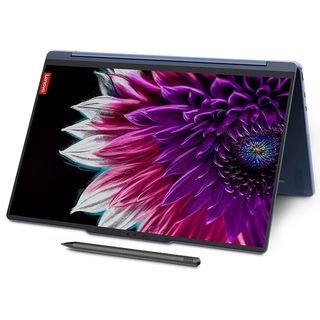
Best overall
Lenovo knocks it out of the park with the outstanding Yoga 9i for 2024. With excellent performance, fantastic hardware, and quality convertible design, the Yoga 9i showcases the best of Windows laptops.
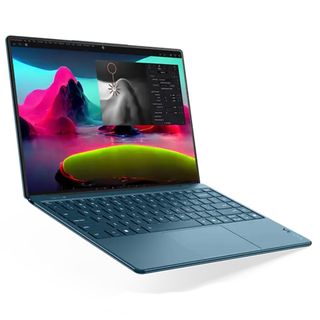
Best design
Lenovo's new Yoga Slim 9i is easily one of the best laptops released so far in 2025, and it's the right choice for anyone who wants an incredible OLED display, luxurious and sleek design, and Copilot+ access via Intel's Core Ultra Series 2 chips.
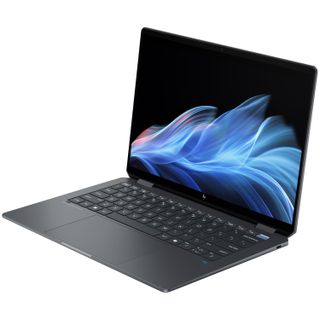
Best convertible
It's not the bold design statement or killer value of past HP Spectre x360 devices, but the OmniBook Ultra Flip 14 can't be considered anything but the best ultra-premium, convertible Windows laptop you can buy right now.
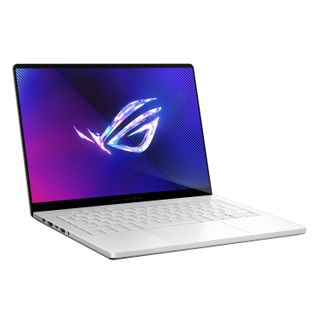
Best gaming
The best gaming laptop on the market remains portable without sacrificing too much power. It includes an AMD Ryzen 9 8945HS CPU and up to a NVIDIA RTX 4070 Laptop GPU, as well as a 120Hz OLED display.
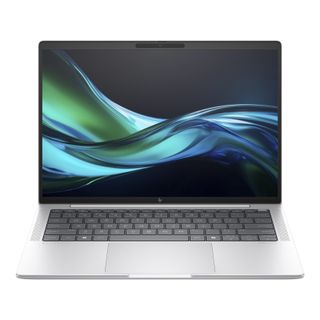
Best business
With a sleek and durable design, optional 5G connectivity, and enterprise-level security features, the EliteBook 1040 G11 is the top choice for business professionals. A quality touchpad and keyboard, as well as a 2.8K OLED display, are standout features.
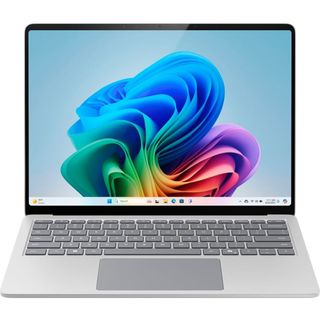
Best Copilot+
The Surface Laptop 7 represents the peak of Copilot+ AI PCs with a flawless design, two beautiful display options, and class-leading keyboard. The Snapdragon X chips provide strong performance and all-day battery life.
Load the next products ↴

Premium gaming
The Blade 18 for 2024 offers the most up-to-date gaming performance hardware with two unbelievable display options to match. It's big and expensive, but it's worth the money if you're an enthusiast.
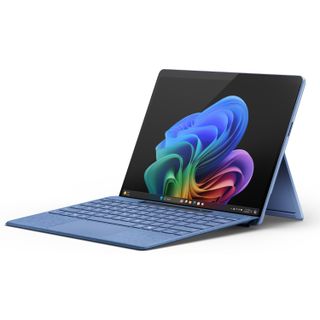
Best 2-in-1
The world's first Copilot+ PC is the Surface Pro 11, powered by Qualcomm Snapdragon X chips for Windows on ARM. If you need a PC that's as comfortable as a tablet as a notebook, this is the way to go.
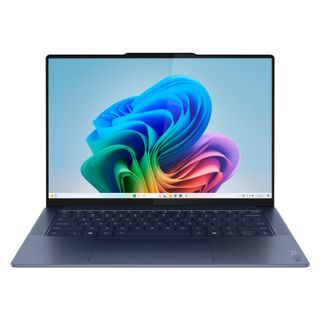
Best OLED
Lenovo created one of the best notebook Copilot+ PCs ever thanks to a thin and light design, high-end features throughout, and one of the best OLED displays I've ever tested.
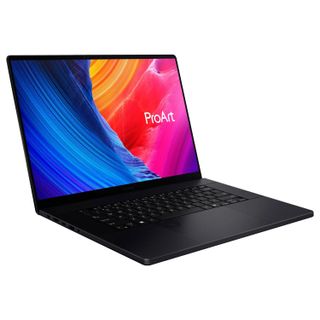
Best for creators
If you need extra power and a specialized 4K OLED display for creative work, the ProArt P16 should be seriously considered. It's well refined and feels "utterly premium."
What I look for in a Windows laptop
Windows Central prides itself on delivering in-depth and detailed laptop reviews. That doesn't just happen accidentally. The countless hours we've put into testing hundreds of Windows laptops from all of the big names (and some smaller names) has resulted in a clear understanding of what works for different users and what's best left on the shelf no matter the buyer.
✅Reliable and modern build quality
✅Strong performance and battery life
✅Color-accurate display with additional perks
✅Features like varied port selection, high-res camera, clear audio
Testing laptops properly takes time and takes some specialized tools, but our team of reviewers is well-equipped for the challenge. Our reviewers essentially "adopt" a laptop before writing the review, keeping it as a main driver until enough information is gathered to clearly decide why it works well and what areas can be improved.
Reviewers test in every instance: build quality and design, including ports; display resolution, color, and performance; battery life and performance on or off AC power; overall system performance from CPU, GPU, RAM, and SSD; and additional features like camera quality, audio design, and input hardware.
• CPU: Central Processing Unit, the centerpiece of your laptop
• GPU: Graphics Processing Unit, handles display output and can be integrated or discrete
• RAM: Random Access Memory, used by the CPU and/or GPU for temporary storage
• SSD: Solid State Drive, used for system storage in modern laptops
• OS: Operating System, in this case Windows
To summarize, I'm looking for laptops that are durable and built to a high standard, laptops that offer the performance and battery life necessary for their intended user base, laptops with color-accurate and clear displays, and laptops with useful extra features like a high-res webcam with privacy shutter, biometric security, strong speakers, and comfortable keyboard.
Our guidelines on how we test and review laptops at Windows Central show a more detailed breakdown of everything we test in a laptop, but you can rest assured that we're carefully analyzing each laptop we review to discover what it's all about.
The best Windows laptops recommended in 2025
Why you can trust Windows Central
The best overall Windows laptop for most people

1. Lenovo Yoga 9i 14 (Gen 9)
Specifications
Reasons to buy
Reasons to avoid
Recent updates
Lenovo has announced the Yoga 9i 2-in-1 Aura Edition (aka Gen 10) at CES 2025. When that laptop becomes available for reivew, we'l update this section to see if it retains its crown.
✅ You want the best premium convertible Windows laptop on the market
✅ You consume a lot of media content like video and want excellent sound and display
✅ You're a creator who wants a color-accurate display for photo editing and light video editing
✅ You want just the finest Windows 11 PC with all the bells and whistles
❌ You primarily game or need a discrete NVIDIA GPU
❌ You need built-in 4G LTE or 5G mobility
❌ You don't need a convertible laptop
❌ You want the best battery life possible
🔎 Yoga 9i 2-in-1 (Gen 9) The ultimate convertible PC has an impressive mix of premium features, including a 360-degree soundbar hinge, high-res OLED display options, and the sleekest design on the market. A 2024 update to performance hardware and webcam makes it better than ever.
Unveiled at CES 2024, Lenovo's latest version of the Yoga 9i 2-in-1 — now in its ninth generation — is our choice for the overall best Windows laptop. Lenovo took a "don't fix what isn't broken" approach to the Gen 9 model, keeping the design mostly the same while slightly shrinking the footprint.
It still has soft, rounded edges and a 360-degree soundbar hinge between the display and body. It is now available in dark Cosmic Blue. The laptop has four speakers, each producing 8W of output with Dolby Atmos tuning.
The soundbar hinge ties in perfectly with the 14-inch display options for those who enjoy watching TV and movies on their laptops, as the speakers are always front-facing, whether in tablet, laptop, or tent mode. It's a one-of-a-kind design that makes it a media powerhouse.
Whether you want a 2.8K or UHD+ resolution, you get an OLED touch panel with 400 nits brightness, 100% DCI-P3 color, Dolby Vision, and VESA DisplayHDR True Black 500 support. The 2.8K model has a 120Hz refresh rate, while the UHD+ model tops at 60Hz. These displays are also ideal for creators who need color accuracy and plenty of pixels.
Above the display is a 5MP webcam with an IR sensor for Windows Hello and a privacy shutter. As for ports, you're looking at dual Thunderbolt 4, USB-C (10Gbps), USB-A (10Gbps, and a 3.5mm audio jack. Unfortunately, the laptop does not have optional 5G/4G LTE connectivity, relying instead on Wi-Fi 6E.
The ninth-gen models jumped to Intel's Core Ultra 7 155H processor (CPU), which includes an NPU and integrated Intel Arc graphics. The system can expect snappy performance thanks to up to 32GB of LPDDR5x RAM and a 1TB M.2 PCIe 4.0 NVMe SSD, but don't expect particularly impressive battery life. The advanced sound and display features come at a cost.
So, why is the Lenovo Yoga 9i 14 (Gen 9) the best?
It perfectly showcases everything that the ultimate Windows (non-gaming) laptop represents. Amazing audio, display, keyboard, touchpad, design, and a 2-in-1 with pen support.
The Lenovo Yoga 9i 14 (Gen 9) does it all.
Attribute | Rating | Notes |
|---|---|---|
Value | 4.5/5 | Day 1 prices for Lenovo are always expensive, but the company routinely runs HUGE sales making its laptops much more affordable. |
Design | 5/5 | Lenovo's famed "speaker bar" is unmatched and the laptop's rounded edges make it very comfortable to use. |
Performance | 5/5 | While we're Qualcomm fans around here, the Intel Core Ultra 7 155H is on the more powerful end of modern laptop CPUs especially for this form factor. |
Battery | 4/5 | Battery life could be better, as with most Intel Core Ultra Gen 1 laptops, but 5 to 7 hours is realistic. |
Display | 5/5 | Stunning and perfect in every way. |
Best designed laptop
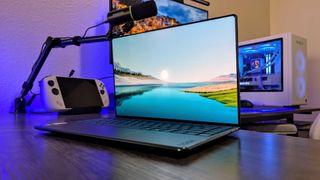

Specifications
Reasons to buy
Reasons to avoid
✅ You want the best laptop display you can buy
✅ You're willing to pay extra for something unique
✅ You often edit photos and video or love watching media on your laptop
❌ You want a gaming PC
❌ You constantly use your laptop webcam and need it to look good
❌ You need a convertible or 2-in-1 design
🔎 Lenovo's Yoga Slim 9i 14 (Gen 10) is a statement piece made to offer the latest design and display hardware to anyone who yearns for a premium laptop. There are some compromises in the name of luxury — just two ports? — but they pale next to everything the PC does right. ★★★★½
Lenovo's Yoga 9i might be the top pick here, but the Yoga Slim 9i (Gen 10) takes the title for best design.
It's one of Lenovo's flagship laptops, and its $1,760 starting price is certainly higher than many of the other options on this list.
However, as Windows Central's Zachary Boddy mentions in their Yoga Slim 9i (Gen 10) review:
"There were no surprises here, and I mean that in the best way possible. The design is just as premium as it needed to be, the display is every bit as stunning and magnificent as Lenovo claimed it would be, the performance and core experience is exactly what a high-end Windows laptop should deliver."
Indeed, the main attraction is the 14-inch 4K OLED touch display with a 120Hz refresh rate. It's capable of hitting 750 nits brightness with HDR enabled (600 nits without), it's certified for Dolby Vision and DisplayHDR True Black 600, and it has an impressive 98% screen-to-body ratio that nearly completely eliminates the bezel.
On the flipside, you also need to be aware of some compromises that aren't as evident in other laptops like the HP OmniBook Ultra Flip 14. That's especially true if you're in search of a convertible PC, as the Yoga Slim 9i is a clamshell notebook despite the name.
Battery life isn't outstanding due to the OLED display — Boddy clocked it at about a six-hour real-world average — and the two Thunderbolt 4 ports are all you get for physical connectivity.
As for the webcam, it's located below the screen due to there not being enough space in the top bezel. If that doesn't work for you, you can always pick up a great standalone webcam.
👉 Read our full Lenovo Yoga Slim 9i 14 (Gen 10) review
Attribute | Rating | Notes |
|---|---|---|
Value | 4/5 | There's no arguing that this laptop is incredibly expensive, but it's a unique device with luxury features. |
Design | 4.5/5 | The best of Lenovo's design comes together to create a gorgeous, sleek, and exotic laptop... With only two ports. |
Performance | 4.5/5 | Excellent performance on and off the charger and finely tuned thermals is exactly what you want to see from a premium device. |
Battery | 4/5 | A display that absolutely tears through battery doesn't stop the Yoga Slim 9i from being decently reliable and consistent, thanks to a large cell and good optimization. |
Display | 5/5 | The lack of VRR and the use of PWM flickering aside, this makes a great case for being the best display ever put into a 14-inch laptop. |
Best convertible laptop
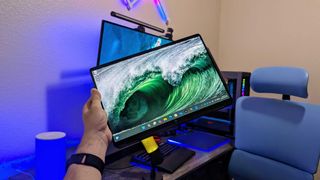
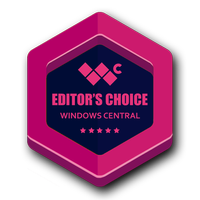
Specifications
Reasons to buy
Reasons to avoid
✅ You want a premium 14-inch convertible PC
✅ A bright, color-accurate OLED display is important
✅ You want an industry-leading keyboard and touchpad
✅ You want a powerful laptop that can last hours
❌ You want a gaming laptop
❌ You're looking for the best value possible
❌ You don't need a convertible design
🔎 HP OmniBook Ultra Flip 14 (2024) refines its predecessor and makes the chassis thinner, lighter, and the battery longer-lasting. "Premium" is an understatement when you see the price, but its features are the best in class. ★★★★½
When I reviewed the HP Spectre x360 14 (2024), I concluded that HP had practically perfected the 2-in-1 convertible form factor. Not even a year later, a company-wide rebrand also delivered into our hands the Omnibook Ultra Flip 14, and it’s one of the few laptops to earn our coveted “Editor’s Choice” award.
The Omnibook Ultra Flip 14 isn’t a full redesign, but it does refine the iconic Spectre x360 chassis with reduced thickness and weight. You still get the same incredible, tactile, and comfortable keyboard, as well as the satisfying, precise haptic touchpad that I will never stop wanting in every laptop I review.
HP didn’t mess with the gorgeous 2.8K OLED display, either, which still rocks a dynamic 48-120Hz refresh rate to improve endurance.
So, what exactly did change? HP replaced that odd dropjaw Type-A port with a more versatile USB Type-C port, and the webcam, speakers, and microphones have been tuned by PolyStudios.
The biggest improvements, though, are on the inside. The HP Omnibook Ultra Flip 14 is now a Copilot+ PC, thanks to the capable NPU inside its Intel Core Ultra (Series 2) chipset.
Of course, the already impressive battery life of the Spectre x360 14 has also enjoyed a very nice bump across the board.
This has enabled new features, including bringing HP’s trusted enterprise-grade Wolf Security suite to consumer devices for the first time, as well as the surprisingly useful HP AI Companion that lets you control your device, access and organize your files, and search the web with natural language.
👉 Read our full HP OmniBook Ultra Flip 14 (2024) review
Attribute | Rating | Notes |
|---|---|---|
Value | 4/5 | Pricing isn't outlandish considering the quality and feature set, but this is absolutely an expensive laptop no matter how you view it. |
Design | 4.5/5 | Part of me misses the bold design of past Spectres, but this is a clean, thin, and light laptop with a versatile, high-quality design. |
Performance | 5/5 | While seeming slower on paper, the OmniBook Ultra Flip lasts longer, runs quieter and cooler, and feels smoother day-to-day. |
Battery | 5/5 | A smaller battery can't stop this laptop from smashing its predecessor in endurance by being an easy all-day work machine. |
Display | 5/5 | Even virtually unchanged from its predecessor, this laptop's display is phenomenal in basically every category. |
Best gaming laptop
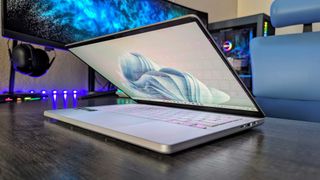

Specifications
Reasons to buy
Reasons to avoid
✅ You want high-performance gaming hardware in a sleek laptop
✅ You want a premium laptop that's great in every category
✅ You prefer a smaller gaming laptop that's easier to transport
❌ You want the most power possible in your laptop
❌ You want a laptop that's better balanced against thermal throttling
❌ You want the best battery life possible
🔎 ASUS ROG Zephyrus G14 (2024) A beautiful gaming laptop refined for a slim, light design that hides some impressive performance under the aluminum body. It's a quality PC that runs hot but delivers a high level of polish. ★★★★½
The Zephyrus family from ASUS has occupied a soft spot in my heart for a while now, but the latest versions have truly elevated these sleek, premium gaming laptops to new heights for the growing company.
The ASUS ROG Zephyrus G14 (2024) comes with a redesigned, all-aluminum chassis that approaches the absolute best (like Razer and Apple) in build quality. It’s a gorgeous laptop with a seriously impressive 120Hz OLED display, best-in-class audio with a quad-speaker system, and a great keyboard.
The Zephyrus G14 is still waiting to be updated with AMD’s latest Ryzen AI chipsets, but you’re still getting incredible performance in a thin-and-light chassis thanks to AMD and NVIDIA hardware.
There are more powerful gaming laptops, for sure, but ASUS did a great job balancing performance and portability with the Zephyrus G14.
What impressed me the most when reviewing this laptop was just how well it handled itself off the charger, too. It certainly won’t compete with the longest-lasting ultrabooks powered by Intel, AMD, and Qualcomm’s best, but the ROG Zephyrus G14 is still more than usable as an all-day work or school machine if you pace yourself.
I adored this laptop so much, and it likely would’ve been the first machine to earn a perfect review score from me if it weren’t for the fact that it does tend to get a little too hot to the touch when under load.
Still, those who want the portability and quality of a premium Windows ultrabook but without sacrificing the power of a gaming or creative laptop — look no further than this.
👉 Read our full ASUS ROG Zephyrus G14 (2024) review
Attribute | Rating | Notes |
|---|---|---|
Value | 4/5 | Priced competitively compared to other gaming laptops despite its higher starting cost. |
Design | 5/5 | Everything is perfect save for the stealthy hinge that feels a bit weak. |
Performance | 4/5 | Expect to sacrifice some raw power due to the 14-inch size, but it'll still handle any of your favorite titles. |
Battery | 4/5 | More than 5 hours of runtime isn't bad for a gaming laptop. |
Display | 5/5 | A 2.8K OLED display offers awesome color, contrast, and performance. |
Best business laptop
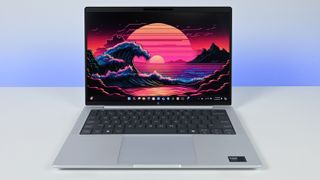

5. HP EliteBook 1040 G11
Our expert review:
Specifications
Reasons to buy
Reasons to avoid
✅ You need a secure laptop for professional use
✅ You want an excellent keyboard
✅ You need optional 5G/4G LTE connectivity
❌ You can't spend thousands on a laptop
❌ You need the best battery life possible
❌ You don't need business features and security
🔎 HP EliteBook 1040 G11 offers just about everything you can ask for in a pro-level business laptop, including strong security measures, optional 5G connectivity, an excellent keyboard, and a slim, smooth design that's easy to take with you. ★★★★★
Business laptops are typically boring, but HP’s EliteBook 1040 series, now on its 11th generation (G11), has always been its gem for those in high management.
New for this model is a complete redesign. It has a soft, pillowy feel thanks to its generously curved chassis with no sharp corners and its new colorway that blends white and silver.
With its relatively light design (2.6 lbs (1.18kg), outstanding redesigned keyboard, ample ports (including three Type-C, two with Thunderbolt 4, Type-A, HDMI, and headphone), and 5MP IR camera, it’s the preferred travel laptop for Editor-in-Chief Daniel Rubino, especially because it supports 4G LTE and 5G for ultimate mobile connectivity and enhanced security. Just pick up a great laptop data plan and be on your way.
It's a fantastic laptop for enterprise purchases, but any professionals requiring additional security, including HP's Wolf Pro Security suite and Secured-Core PC certification, can benefit from it. Remember that you'll pay more compared to a standard consumer laptop.
The display prioritizes battery life by offering the standard configuration of a WUXGA LED (1920x1200). However, users can customize it with a 2.8K OLED display for higher resolution requirements and enhanced contrast. HP also offers an anti-glare option for those who work long hours and want to reduce eye fatigue and an optional SurveView 5 Privacy Screen (which electronically reduces visibility from the side to deter onlookers when working on secure material).
The processor options are the first-gen Intel Core Ultra series with vPro for enterprise support and security. They range from Core Ultra 5-125H up to Core Ultra 7-165H, with RAM ranging from 16 to 32GB. Graphics are integrated with Intel Graphics, as a discrete NVIDIA GPU does not fit this laptop’s genre. Likewise, storage goes up to 2TB but starts at 256GB for those mostly doing cloud work or wanting to save money.
So, why is the HP EliteBook 1040 G11 the best? It’s the perfect balance between power, weight, design, and nailing the “core” of any good laptop. It has solid speakers, a very good webcam, a large smooth touchpad, the right ports, optional 5G, and one of the best keyboards we’ve used (sorry, Lenovo). It’s also extremely comfortable to work on, thanks to no sharp edges digging into your palms when typing, and the new fingerprint-less chassis is a dream for those who hate dirty laptops.
Daniel Rubino and other tech reviewers praise this laptop, often seen using it at tech press events. It’s always a great sign for a product when you see it as the choice for many reviewers. The only downside is that HP has yet to refresh it for Intel’s Core Ultra Series 2 chips, which get better battery life—something we’d never say no to —so we’re looking forward to the EliteBook 1040 G12, hopefully later in 2025.
Attribute | Rating | Notes |
|---|---|---|
Value | 4/5 | Business laptops are never cheap as they get longer, better support, and have niche hardware for enterprise like vPro and 5G. |
Design | 5/5 | It's a dream to hold, use, and look at. |
Performance | 4.5/5 | Meant for management and information-specialists, Intel's Core Ultra chips with vPro get the job done. |
Battery | 4.5/5 | It's 1920x1200 display gets the most out of its larger 68WHr battery. |
Display | 4.5/5 | The standard 1920x1200 LEDis a workhorse, but we like the 2.8K OLED option for those who want premium. |
Best Copilot+ PC





Specifications
Reasons to buy
Reasons to avoid
✅ You want one of the best Copilot+ PCs on the market and a strong competitor for a MacBook Air
✅ You want all-day battery and reliable performance on or off AC power
✅ You want an industry-leading typing experience
❌ You want to play AAA games
❌ You have certain hardware or software that doesn't yet work on ARM (like Audition)
🔎 Surface Laptop 7 The best thin and light Windows laptop you can buy on the market right now. Its starting price offers incredible value, and I can recommend it to practically anyone. ★★★★★
The Surface Laptop 7 was our pick as the overall best laptop in 2024, and it’s still the best Copilot+ PC you can buy today.
It features an incredible contemporary design that’s thin, light, and feels excellent in the hand. It’s made from a seamless aluminum chassis and features either 13.8-inch or 15-inch screen sizes with 120Hz panels and touch support.
In my review, I called the Surface Laptop 7 the best laptop, period.
That’s because it features incredible battery life, an excellent keyboard and trackpad, a great display, and good performance thanks to the Snapdragon X SoCs found on the inside.
These new Qualcomm chips provide excellent single- and multi-core performance while maintaining good efficiency, meaning you should get all-day battery life.
The Surface Laptop 7 is available in multiple colors, including fun colors such as blue and gold, as well as more traditional colors like silver and black. The blue and gold colorways are only available on the 13.8-inch model.
The device can also be configured with 16GB or 32GB RAM, up to 1TB SSD storage, and either Snapdragon X Plus or X Elite chips for the most power.
It launched as the first Copilot+ PC, and in my opinion, it’s yet to be beaten. A stellar laptop.
👉 Read our full Microsoft Surface Laptop 7 review
Attribute | Rating | Notes |
|---|---|---|
Value | 5/5 | Even the introductory $999 model is enough for a vast majority of users. |
Design | 5/5 | My biggest criticism, the Surface Laptop's stale design, has been updated this time around. |
Performance | 4.5/5 | Stellar ARM64 performance, SSD could be faster. |
Battery | 5/5 | Phenomenal battery life will keep you going through a full day of use. |
Display | 4/5 | High-res touchscreen with Dolby Vision and 120Hz refresh rate. Lacks OLED tech and inking support. |
Premium gaming

Specifications
Reasons to buy
Reasons to avoid
✅ You want the best gaming hardware available in a laptop.
✅ Most of your time gaming is spent near an AC outlet.
✅ You want a huge, high-end display for gaming and for other work.
❌ You want a gaming laptop that's easy to carry around.
❌ You don't want loud fans running when gaming.
❌ You mostly play games on the move away from an AC outlet.
🔎 Razer Blade 18 (2024) is a heavy, gigantic behemoth of a laptop, and it has some of the loudest fans I've ever heard in my life. However, it will run absolutely any game you throw at it. ★★★★½
The Razer Blade 18 is ridiculous in a good way. It's completely overkill and has some world-first hardware that still isn't particularly useful to the everyday user.
Still, I love this thing. During my testing, I let out a few audible laughs as it shrugged off AAA gaming with its RTX 4090 mobile GPU. Yes, it's a cut-down version of its top-end NVIDIA RTX desktop counterpart, but this portable variant is as powerful as it would ever need to be.
As for that Thunderbolt 5 port, it might support intriguing features like Thunderbolt Share, but there's little else to excite the average gamer besides an across-the-board spec bump that likely wouldn't affect most people.
While I try to avoid the term "future proof" as much as possible, that's really the only appeal of the Blade 18's monstrous I/O. However, the options for a QHD+ (2560 x 1600) 300Hz Mini-LED screen or a 4K 240Hz are far more exciting. I tested the former, and it's the best option in my eyes.
Make no mistake: this laptop is big, heavy, and loaded with cutting-edge tech like Wi-Fi 7 to support a range of wireless routers that most homes don't have yet.
However, if you find the Blade 18 on sale with its 2024 spec refresh and your budget can cover the cost, you won't be disappointed with its gaming performance.
This is the ultimate premium gaming laptop in every way, even avoiding the oversaturated RGB aesthetic, which is impressive for a brand like Razer that usually loves flashing lights.
Plus, you don't have to go for the RTX 4090, and there are ways to reduce the cost by customizing your order and opting for an RTX 4080 or RTX 4070 GPU.
👉 Read our full Razer Blade 18 (2024) review
Attribute | Rating | Notes |
|---|---|---|
Value | 4/5 | It costs a lot, but you get the best hardware on the market. |
Design | 5/5 | Razer has perfected its form, even in an 18-inch device. |
Performance | 4.5/5 | The best gaming hardware for laptops is here. |
Battery | 3.5/5 | Better than the 2023 model, but still not great for portable play on battery. |
Display | 5/5 | So good they're almost overkill. |
Best 2-in-1 laptop
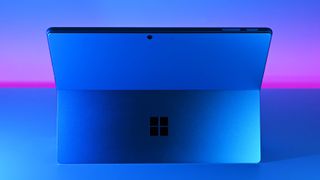

Specifications
Reasons to buy
Reasons to avoid
✅ You want the best Surface Pro that Microsoft has ever made.
✅ You want the best of Windows 11 (inking, NPU for Copilot+, 2-in-1 form factor, 5G).
✅ You're a creator, artist, student, or simply love watching movies on an OLED screen.
❌ You want to game a lot.
❌ You're a video editor who needs a discrete GPU.
❌ You don't like the 2-in-1 form factor with removable keyboard.
🔎 Surface Pro 11: The Surface Pro 11 is celebrated as one of the best Windows PCs of 2024, thanks to Qualcomm's new Snapdragon X processor, a stunning 120Hz OLED display, and the flexible Flex Keyboard. It now has exceptional performance, excellent battery life, and an outstanding 12 MP front-facing camera. It finally realizes the original vision for the Surface Pro. ★★★★★
As of 2025, Microsoft’s Surface Pro had been around for 12 years, but it wasn’t until late 2024 that we could claim that the full vision of that device was realized.
Thanks to its new Qualcomm Snapdragon X processor, the Surface Pro 11 is finally powerful and has great battery life. It also did not have a fan blasting all the time.
To that end, I’ve used every Surface device Microsoft has made. As a fan of the Surface Pro concept, I think Microsoft did an outstanding job with its 11th iteration. You should trust my opinion because I still use it daily (despite having dozens of cutting-edge laptops at arm's reach).
New for 2024-2025 is finally the option for a gorgeous OLED display, new colors (always go for sapphire), and smaller refinements to the chassis.
But the Qualcomm Snapdragon X and X Elite chips became the heart of Surface Pro 11, making it a success and displacing Intel for the consumer models. It was the right choice. For the first time, I felt I could leave the Surface charger at home because this thing finally gets all-day battery life, and yet it was more powerful than nearly all my Intel-based laptops, including 15-inch workstations.
Where else does Surface Pro 11 excel? Basically, everything. It has excellent audio and display and easily the best webcam of any laptop I have tested (plus a world-facing camera).
This year's other killer feature was Microsoft’s introduction of the new Surface Flex Keyboard, which I didn’t know I needed. While expensive, it offers a superior haptic touchpad and Bluetooth that operates independently of the Surface Pro. Additionally, the Surface Slim Pen is always exposed for easier access. Due to its design, the keyboard deck is also stiffer with less flex (ironic because of its name). If you can afford it, the Surface Flex Keyboard is a must-have accessory for the Surface Pro 11.
The best part? While Surface Pro 11 is better in every way, it’s also $200 cheaper than the previous iteration, making it much more affordable this time.
👉 Read our full Surface Pro 11 review
Attribute | Rating | Notes |
|---|---|---|
Value | 4.5/5 | Surface devices come at a premium, but you're getting more than ever in this generation. |
Design | 5/5 | The standard for all 2-in-1 Windows PCs. |
Performance | 5/5 | Bests every other Surface Pro and competes with the other best Windows laptops. |
Battery | 5/5 | 10+ hours of real-world runtime is awesome. |
Display | 4.5/5 | The only thing the OLED display lacks is an anti-reflective finish. |
Best OLED


Specifications
Reasons to buy
Reasons to avoid
✅ You want a laptop with true all-day battery life (about 12 hours of screen time).
✅ You want a larger 14.5-inch display with high resolution and impressive specs.
✅ You want an all-around amazing laptop that gets everything right.
❌ You have apps or peripherals that don't yet work with Windows on ARM.
❌ You want a Lenovo Yoga that's a convertible (this is a notebook).
🔎 Lenovo Yoga Slim 7x (Gen 9) This new-generation Windows on ARM device is sleek, beautiful, rocks an incredible OLED display, boasts amazing performance and long-lasting endurance, and does everything you need it to for hundreds less than you'd expect. It's the highest rated laptop I have ever reviewed. ★★★★★
What exactly does it take for a laptop — unbelievably complex, multi-faceted devices — to be “perfect,” or at least perfect from a review perspective? I reviewed many, many laptops before I found that answer in the Lenovo Yoga Slim 7x 14 (Gen 9), which, to this day, is my only 5/5 laptop review.
The Yoga Slim 7x is one of the first laptops powered by Qualcomm’s Snapdragon X series, specifically the powerful Snapdragon X Elite.
Qualcomm’s chipsets have evolved by leaps and bounds for Windows devices, and improvements to Windows on ARM have made these laptops just as simple to recommend as a traditional Intel or AMD laptop.
This sleek, 14.5-inch ultrabook (yes, that is noticeably more screen real estate than your average laptop), runs like a dream and handles absolutely everything you can throw at it. More impressive, though, is how this laptop refuses to die no matter how hard you push it, thanks to the efficiency of ARM64 both on and off the charger.
There’s more to love about the Lenovo Yoga Slim 7x than just how it runs (or for how long), though.
You get a bright, vibrant, and fast 90Hz OLED display, a fantastic keyboard and touchpad combination, and a sleek aluminum design that makes it effortless to slip this laptop into a bag.
All that, and the Lenovo Yoga Slim 7x starts at $1,200, but you can often find it on sale for much less. That accessible pricing has made this laptop incredibly easy to recommend to anyone simply looking for an amazing Windows laptop, period.
👉 Read our full Lenovo Yoga Slim 7x (Gen 9) review
Attribute | Rating | Notes |
|---|---|---|
Value | 5/5 | Fully upgraded with tons of high-end features for a reasonable price. |
Design | 5/5 | Thinner and lighter than competing laptops with smaller screens. |
Performance | 5/5 | Handles everything I threw at it on and off the AC charger. |
Battery | 5/5 | A huge battery and an efficient SoC makes it one of the longest-lasting PCs I've used. |
Display | 5/5 | Bright, color-accurate, and vivid OLED touch display. |
Best for creators
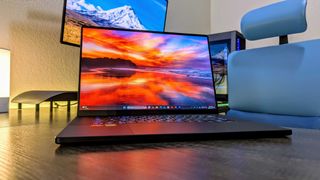

Specifications
Reasons to buy
Reasons to avoid
✅ You want a premium and powerful laptop for creative work
✅ You need a class-leading 4K OLED display with outstanding color reproduction
❌ You won't take advantage of the power and creator features; no sense spending large on something you won't use.
🔎 ASUS ProArt P16 (2024) It takes everything great about the company's latest ROG Zephyrus devices and refines and polishes it for a different group of consumers that demand higher quality. A capable and premium machine that justifies its premium cost. ★★★★½
What exactly separates a great gaming laptop from a great creator laptop? ASUS has figured that out, and you only need to look at the ProArt P16 for your answers. Built on the same foundation as the also-great ROG Zephyrus G16 (2024), the ASUS ProArt P16 makes a handful of key changes.
Don’t worry; you still get the incredibly capable foundation built off AMD Ryzen AI and NVIDIA GeForce RTX, so you get a full-featured AI PC with all the power you need for gaming, creation, and everything in between.
ASUS’s great tuning means the ProArt P16 can spend a decent amount of time off the charger, too.
What makes this laptop special comes down to three areas: the design, the display, and the software. On the first front, ASUS further refined the ultra-premium Zephyrus design with a matte black finish, then added extra features like programmable macro keys and a special, fully customizable control dial built directly into the massive glass touchpad.
The 16-inch OLED display trades a high refresh rate for a 4K resolution, making it pin sharp on top of being factory calibrated for picture-perfect color accuracy. ASUS also built that calibrated color profile into the laptop, so all you need is a colorimeter to ensure your colors are perfect.
Finally, ASUS ProArt software suite gives you a ton of control over your laptop, as well as a vast variety of tools and add-ons to make creation of all kinds easier.
All that makes the ASUS ProArt P16 (2024) an expensive laptop, but you can be confident you’re getting a high-quality product designed with you in mind.
👉 Read our full ASUS ProArt P16 (2024) review
Attribute | Rating | Notes |
|---|---|---|
Value | 4/5 | Very expensive, but cheaper than many competing creator laptops with similar features. |
Design | 5/5 | A gorgeous laptop carefully refined with plenty of ports and durability guarantees. |
Performance | 5/5 | SSD is on the slow side, but it still exceeds all my expectations. |
Battery | 4/5 | Endurance can be inconsistent due to the NVIDIA GPU, but it's still possible to land all-day battery life. |
Display | 4.5/5 | Color-accurate OLED display except it could be brighter with a higher refresh rate. |
Honorable mentions
Just because a device didn't make it into the main list of the 10 best Windows laptops doesn't mean it shouldn't be considered. There are plenty of laptops we get to test out and use that don't get a full review, but we can still offer informed buying advice.
That includes the Dell XPS 13 (9345), a Copilot+ PC with exceptional battery life and a stellar display. We also love the ASUS Zenbook Duo with two OLED screens, but it's aimed at a niche audience of mobile multitaskers. And then there's the HP Spectre Foldable, a 17-inch tablet that folds down the middle and comes with a keyboard and stand.
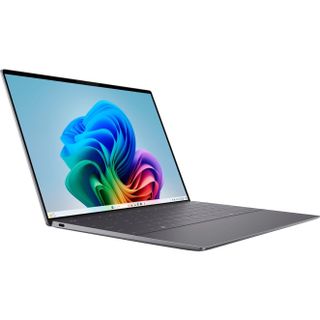
Dell's XPS 13 (9345) is powered by a Snapdragon X Elite (X1E-80) SoC for high-end ARM64 performance, but the real benefit comes from its impressive all-day battery life. Its futuristic design with lattice-free keyboard and seamless haptic touchpad might not quite be what you want, but it remains the 13-inch notebook to beat. From $1,200 at Dell
👉 Read our full Dell XPS 13 (9345) review
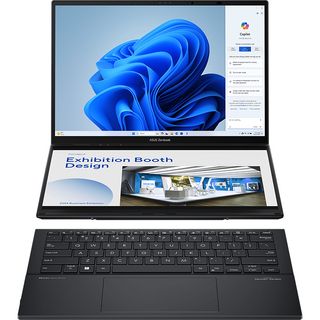
The Zenbook Duo has two 14-inch OLED touch displays to work with, making it extremely versatile for mobile multitaskers. Battery life is better than you'd expect, it performs well while keeping its cool, and the attachable keyboard provides comfy typing. It's a bit heavier than over 14-inch PCs, but that's expected with all the extra hardware. From $1,700 at Best Buy
👉 Read our full ASUS Zenbook Duo (2025) review
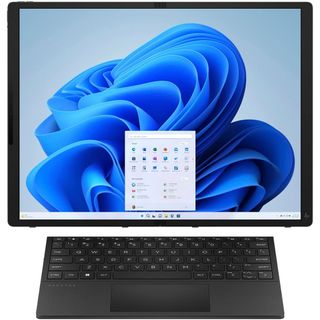
The Spectre Foldable 17's astronomical price keeps it out of reach for 99% of PC users, but it's too cool for me not to mention. The 17-inch OLED touch display folds down the middle when in transit, and it comes with a keyboard and touchpad that attaches seamlessly. It probably won't be on the market much longer unless HP creates a refreshed version. $4,000 at Best Buy
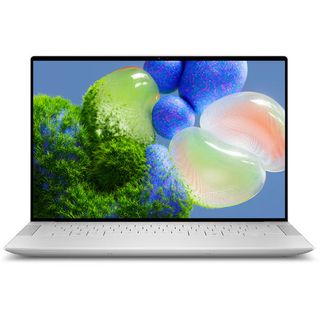
I replaced the XPS 14 (9440) with the Lenovo Slim 9i 14 (Gen 10) in the main list, but that doesn't mean Dell's laptop isn't worth considering. That's especially true if you want a futuristic 14-inch notebook with an OLED display and the option to add a discrete NVIDIA GPU. From $1,500 at Dell
👉 Read our full Dell XPS 14 (9440) review
Windows Central's laptop review team

Daniel Rubino is the Editor-in-Chief of Windows Central, head reviewer, podcast co-host, and analyst. He has been covering Microsoft since 2007 when this site was called WMExperts (and later Windows Phone Central). His interests include Windows, laptops, next-gen computing, and, for some reason, watches. Regarding the former, his expertise helps advise the team on which aspects are most important when shopping for the best Windows laptops. This leads to the cumulative selections listed here, updated with modern choices if deserved.

Zachary primarily focuses on covering the latest news in tech and gaming, the best Xbox and PC games, and the most interesting Windows and Xbox hardware. With countless laptop reviews written, Zachary is a trusted source for everything to do with laptops.

Zac is the go-to specialist for everything Windows, and he's also keen to test and review Windows laptops and PCs. With extensive hardware and software knowledge, he knows exactly what makes a good Windows laptop.

Self-professed geek, Rebecca Spear, is one of Windows Central's gaming editors with a focus on gaming handhelds, mini PCs, PC gaming, and laptops. When she isn't checking out the latest titles on Xbox Game Pass, PC, ROG Ally, or Steam Deck; she can be found digital drawing with a Wacom tablet. She's written thousands of game guides, previews, interviews, features, and hardware reviews over the last few years.

I've built more custom gaming PCs than I can count and tested a wealth of portable options, including laptops, handhelds, and curious in-betweens. Windows remains the best for gamers, and I won't let you waste your cash on overpriced junk.

I've been testing and reviewing Windows laptops since 2016, giving me thousands of hours of experience with all of the latest hardware on the market. With no fear of pulling a laptop apart, I have a clear understanding of what makes a quality PC inside and out.
How to choose the best Windows laptop for you
Buying the best Windows laptop for your needs should involve some careful shopping. You want something worth your money that will last for years to come. If you can get a device that meets your needs, and you pay what you want to pay, you'll be much happier in the long run.
Most of our favorite laptops start around the $1,000 mark, though some climb quite a bit higher. That's for good reason, as they're generally more powerful or have a more specialized focus. In general, the more you pay the more you can expect from your PC. All reviewers take that into account when testing a laptop.
For what purpose are you buying a laptop?
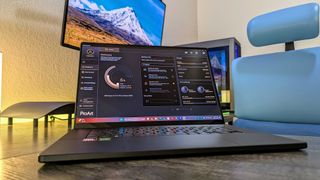
There are a few general uses for which most people buy a laptop: gaming, multitasking, productivity, multimedia editing, or business. Ask yourself what you'll mostly be using the laptop for, and you'll have a much easier time deciding on what type of device you need.
- Heavy usage: Gaming, design, and editing require powerful hardware. You should aim for a high-end CPU and a dedicated GPU. Pair with a high-resolution display with accurate color reproduction if you have the budget. The Razer Blade 18, ASUS ProArt P16, and ASUS ROG Zephyrus G14 all fit into this category.
- Standard usage: Heavy web browsing, occasional gaming, and productivity require average hardware. A high-end CPU will undoubtedly come in handy, though a dedicated GPU is optional. If working with media, extra RAM is never a bad thing. Check out the Yoga 9i 14, Yoga Slim 9i, Dragonfly G4, or Yoga Slim 7x.
- Light usage: Light web browsing, email, and occasional video streaming don't require much power. A low- or mid-range CPU will handle this type of work, allowing you to save a lot of money. You also don't have to worry as much about screen resolution and color reproduction.
How to choose the right form factor
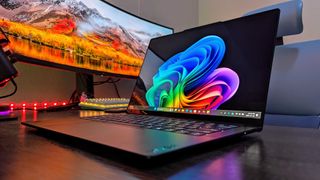
A laptop's design will significantly change how you use it on an everyday basis, so you want to be sure that you buy the right type.
Modern laptops are available primarily in three different designs:
- Notebook: This is your standard clamshell laptop with a lid that opens to a maximum of about 180 degrees. Notebooks sometimes come with touch displays, but you'll mostly see them with non-touch options. The Yoga Slim 9i, Yoga Slim 7x, and Surface Laptop 7 are easy recommendations if you want a notebook.
- Convertible: If you're looking at a laptop with a screen that rotates all the way around to become a tablet, you're looking at a convertible laptop. The design also allows for tent and stand modes, offering you some variety. Convertible laptops use touch displays, like the Lenovo Yoga 9i 14 and HP Spectre x360 14.
- 2-in-1: Laptops with a removable keyboard and touchpad are called 2-in-1. You can use them as a tablet without anything attached, but you can also connect the keyboard for a full laptop experience. 2-in-1 devices use touch displays and often have a compatible active pen, like the Surface Pro 11.
Convertible and 2-in-1 laptops work fine as standard laptops, but they also have the added benefit of working as a tablet. If you hate the idea of a tablet and think you'll be sticking with a standard laptop design, choosing a notebook PC can usually save you money.
Even if a laptop doesn't have every feature you require, don't stress too much. A good laptop can be made great when you add some worthwhile laptop accessories. Even if you're looking to have fun, quality gaming laptop accessories can make a huge difference to your overall experience.
Don't skimp on the keyboard and touchpad

The keyboard and touchpad are your entry to Windows, and they're two features that you'll use the most. Unless you plan on always having an external mouse and keyboard connected, you want to be sure that you're getting a laptop that doesn't stand in the way of productivity.
Key travel, keycap size and spacing, touchpad size and type, and backlighting are all taken into account during the laptop review process. Because we actually use these laptops on a daily basis, it quickly becomes clear if there are problems with typing or pointing.
You usually want to aim for somewhere between 1.0mm and 1.5mm of key travel, and a backlight is crucial when working in low-light environments. As for the touchpad, you'll usually see the traditional mechanical type with moving parts. They're good, but they're not as good as the haptic touchpads now showing up in more Windows laptops like the Surface Laptop 7 and Dell XPS 14.
Shopping in the right price range
Finding your ideal price range when buying a new Windows laptop is another key ingredient. You don't want to overspend on a laptop with features that go unused, but you also don't want to underspend and not have the right laptop for the task at hand.
Here's a breakdown of common price ranges for Windows laptops in 2024.
- $400 - $700: Budget Windows laptops won't break the bank, but they also usually come with some drawbacks. Pay attention to display type and resolution, battery capacity, and CPU. Chances are they might not be up to your standards.
- $700 - $1,000: Mid-range Windows laptops fall into a "mixed bag" category where you might get something like a strong processor with large battery capacity but a weak display or lacking build quality. Budget gaming laptops usually start showing up in this price range. This is where most buyers will find what they need.
- $1,000 - $1,500: Most of the best Windows laptops on the market today fall into this price range, including many of the laptops I've included in this guide. You can expect a quality display, strong performance, solid battery life, and reliable build quality.
- $1,500 - $2,000: Getting into specialized requirements for creators, developers, and designers raises the price of a laptop, but you can also expect PCs made for business professionals to come in at a higher price due to extra security features. Many quality gaming laptops also live in this price range.
- $2,000 and above: Now we're getting into the heavy hitters for gaming and development. There are still some premium Ultrabooks with extra performance hardware and high-res/high-tech displays found in this price range, but most people shouldn't expect to pay this much.
How we test Windows laptops
Testing laptops is no easy challenge, especially when considering how complicated processors, sensors, displays, Wi-Fi/cellular, memory, and varying storage speeds can all impact performance and battery life.
Windows Central PC reviewers “adopt” the computer they are planning to review for a long enough duration to reach a subjective decision about its design, aesthetics, functions, and features. We also put each PC through a rigorous battery of tests performed under the same scenarios for objective data to help guide any conclusions.
Windows Central rates every laptop we review based on a star rating scale. One star is the lowest rating, while five stars is the highest. Objective performance data is combined with the subjective experience of the writer and the context of the overall laptop ecosystem to come up with this score.
- 1-1.5 stars: We cannot recommend this laptop, period. Save your money!
- 2-2.5 stars: We don't recommend you buy this laptop, but it does have some redeeming qualities that may be attractive to some.
- 3-3.5 stars: Laptops with this rating are just average, with an even spread of pros and cons. We may not be stoked about this laptop, but it's worth considering and may be just what someone is looking for.
- 4-4.5 stars: Reviews with this score are for laptops that we feel are above average and are definitely worth your time to consider.
- 5 stars: The best of the best. This score is reserved for the most standout laptops in their category for quality and experience. You can be sure that your money will be well spent with these laptops.
For more information about our review awards and our team of reviewers, be sure to have a look at our broader guide on how we test and review on Windows Central.
Frequently Asked Questions
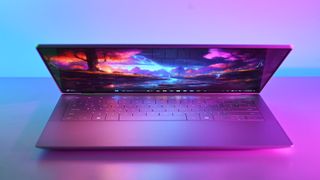
Shopping for a new Windows laptop raises plenty of questions, and we're here to help answer some of the most common that come our way.
Have any more questions that I didn't address here? Hit the comments and I'll be glad to follow up.
Should I choose an Intel, AMD, or Qualcomm processor?
Qualcomm made major waves in the Windows PC world when it unveiled its Snapdragon X Systems-on-Chip (SoC) for Windows on ARM in May 2024. As a major part of Microsoft's Copilot+ initiative, the X Elite and X Plus chips have a Neural Processing Unit (NPU) powerful enough to handle the new AI tools built into Windows 11.
As we quickly discovered when testing Snapdragon X Copilot+ PCs, the chips also (and more importantly) deliver unprecedented efficiency and performance. The drawback? ARM64 architecture can't run apps built for the x86-64 architecture in use by Intel and AMD, so software needs to be recompiled or emulated. For general users, that's not going to be an issue, but those into more specialized work might find that their necessary software won't run at all on ARM64.
AMD and Intel's new CPUs — AMD Ryzen AI 300 and Intel Core Ultra Series 2 — have massively improved NPU performance, and both are expected to gain access to Copilot+ in November 2024.
Bottom line? For the best efficiency-to-performance ratio, stick with a Qualcomm Snapdragon chip. Don't want the hassle of potential emulation or incompatible apps? Stick with AMD or Intel; just be sure to land the aforementioned latest CPUs from either company if you want to try out Copilot+ tools. If you're a gamer, Intel and AMD are still your best bet.
Do I need a dedicated graphics card for gaming?
Mobile laptop processors include an integrated graphics chip to handle everyday display and task requirements. This integrated chip is usually limited in what it can do, so PC gamers commonly turn to a separate — usually referred to as "discrete" or "dedicated" — GPU to handle the heavy lifting. When buying a gaming laptop, you'll most often see an NVIDIA RTX laptop card listed in the specs.
That's not to say that all games require a dedicated GPU. I play plenty of my favorite lightweight games on integrated graphics, and the reality of modern game streaming means all you really need is a strong internet connection and a subscription to something like Xbox Cloud Gaming.
However, those who want to take in more demanding titles with fancy graphics will want to pick up a laptop with a dedicated graphics card. The RTX 4060 is extremely popular thanks to its ability to handle most games on the market, though even the RTX 4050 can give you a significant boost at 1080p.
How much RAM do I need in my laptop?
The answer to this question again boils down to how you use your PC. These days, 4GB of RAM just won't cut it for the average user, and you'll be hard-pressed to find a quality laptop that's shipping with the small size.
For casual users engaged in light web browsing, email, writing, and general multitasking, 8GB should be enough. Love to load your browser up with countless tabs? Consider stretching your laptop to 16GB of RAM.
On that note, I recommend 16GB for anyone who often has multiple apps running simultaneously. Casual gamers should also consider starting at 16GB, and this amount will also be beneficial for professionals with laptops featuring extra security measures.
32GB of RAM (or more) is usually reserved for gamers, creators, video editors, engineers, developers, and other power users who won't see the extra capacity go to waste. Keep in mind that many gaming laptops and workstations feature upgradeable RAM; just because you buy a laptop with a set amount doesn't always mean it's stuck with that much for its lifetime.
How much storage do I need in my laptop?
Most laptops these days are shipping with at least 256GB of storage. Casual PC users will be able to get by with this amount, as it provides more than enough to house Windows 11 as well as your favorite apps.
Upgrading to 512GB of storage is recommended if you're involved in photo editing or other tasks with large files. That includes casual gaming, as a drive can quickly fill up if you have a large Steam library.
Going with 1TB or more storage is usually recommended for gaming laptops, as well as for power users working with large file sizes. Most laptops still offer an upgradeable SSD, so you might be able to save some money at checkout and upgrade later when a popular SSD goes on sale.
What is an AI PC or Copilot+ PC?
The current AI computing craze comes with a lot of new terms and buzzwords, and you've no doubt noticed my mentioning AI PC and Copilot+ PC throughout this guide.
An AI PC is technically any system that contains specific hardware inside designed for local AI acceleration. In desktop PCs, that usually points to an NVIDIA GPU with Tensor cores or AMD GPU with RDNA cores. In laptops, that signals a dedicated Neural Processing Unit (NPU) that lives alongside the main Intel, AMD, or Qualcomm processor.
A Copilot+ PC takes things one step further. Microsoft's initiative to bring next-gen AI tools to Windows 11 requires an NPU with at least 40 TOPS of power. Qualcomm was the exclusive chip provider for Copilot+ PCs for most of 2024, but Intel and AMD's newest mobile CPUs now have enough NPU power to qualify. They're expected to gain access to Copilot+ tools in November 2024.
Senior Editor Zac Bowden's Windows 11 24H2 review has an excellent analysis of the available Copilot+ tools — including Live Caption, advanced Windows Studio Effects, Cocreator, and the delayed Windows Recall — and there are more AI tools expected to arrive soon on Copilot+ PCs.
Do I need an OLED display?
Windows laptops come with a bunch of different display tech, and it's no longer enough to simply look at resolution. IPS panels are still among the most commonly used, providing wide viewing angles, decent color, and a reasonable cost.
Once you compare IPS to OLED, however, it might be hard to return to the former display type. OLED is becoming more common in laptops as costs drop, and you can regularly find premium laptops with at least one OLED display option. Unlike IPS displays, OLED displays don't have a traditional backlight. Instead, each LED can create its own light when applied with electricity.
That eliminates backlight bleed, and it allows each individual pixel to completely go dark. Contrast is incredible, and color reproduction across gamuts is usually perfect (or very near to it). If you often watch movies or game on your laptop, an OLED display is only going to improve your experience.
There are some downsides to OLED. They require more power, putting a bigger hit on battery life. They also have a potential for burn-in, though this issue has mostly been negated in laptops thanks to onboard software that minimizes the risk. And, of course, OLED displays cost more than their IPS counterparts.
Do you really need an OLED display? No, but speaking from experience, once you upgrade to OLED you won't want to return to IPS.
What type of webcam do I need for video meetings?
Webcam quality in a laptop is more important than ever with so many people working remotely, and each laptop in this guide has the hardware required to keep you looking good. A 1080p resolution is as low as you want to go, and anything higher will improve the clarity of your picture.
Keep in mind that Windows Studio Effects built into Windows 11 can go a long way in improving an entry-level webcam's picture, and Copilot+ PCs further expand on those tools.
You also want to consider security and privacy. Keep an eye out for an IR sensor for biometric facial security through Windows Hello; it gets even better if the laptop has human presence detection (HPD) tools that can automatically lock and unlock your PC when you depart or approach. And if you're worried about privacy, pick up a laptop with a built-in webcam shutter.
Take a look at our favorite laptops for video conferencing for more hardware choices and information.
What ports do I need in my laptop?
Buying a laptop without at least USB-C connectivity in 2024 isn't recommended. In fact, you'll have a hard time finding a laptop without USB-C these days. It's become the standard for even budget PCs, and the most basic oval connector handles data and power delivery.
The USB-C form factor is also used in Intel's Thunderbolt 3/4/5 tech and its modern USB4 counterpart usually found in AMD and Qualcomm systems. You don't absolutely need Thunderbolt or USB4 in a laptop, but it will significantly improve transfer speeds and bandwidth for things like external monitors and docking stations.
Beyond USB-C, Thunderbolt, and USB4, you might want a laptop with native USB-A connectivity. Plenty of accessories still use the older form factor, and it can be annoying to always need an adapter for USB-C gear. A lot of laptops are thinning out and moving to USB-C, but plenty still offer USB-A connectivity.
If you often work with a wired internet connection, an Ethernet port is also recommended. It's usually found on gaming laptops, workstations, and business PCs. And if you prefer a wired audio solution, a 3.5mm audio jack is recommended.
Get the Windows Central Newsletter
All the latest news, reviews, and guides for Windows and Xbox diehards.

Cale Hunt brings to Windows Central more than eight years of experience writing about laptops, PCs, accessories, games, and beyond. If it runs Windows or in some way complements the hardware, there’s a good chance he knows about it, has written about it, or is already busy testing it.